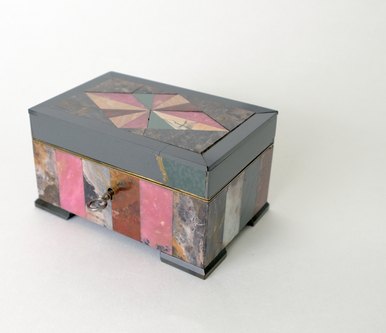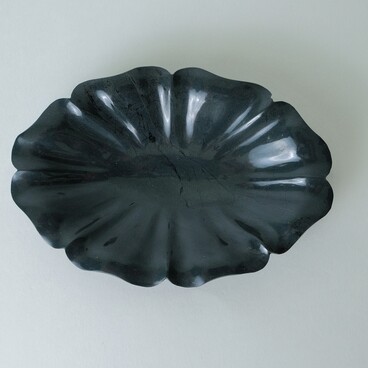Museum of Stone-Cutting and Jewelry Art History houses a large vase made of Kalkan jasper. The place and time of its manufacture are unknown. But researchers assume that it was created in the 19th century by craftsmen of the Yekaterinburg Lapidary Factory.
A wide bowl with low sides is placed on a round pedestal. It is decorated with a carved pattern of laurel and palm leaves. The outer surface of the vase is polished to a high gloss.
Experts concluded that the vase was made at the Yekaterinburg Lapidary Factory after they compared it with another similar piece from the collection of the State Hermitage Museum. The egg-shaped vase was made of the same Kalkan jasper and it was decorated with a carved plant-based ornament on the neck, foot, and main part of the vase. The hereditary master-carver Gavrila Nalimov, who worked at the Yekaterinburg factory in the 1840s, created it. Architect Ivan Galberg drew the sketch for the vase. In 1851, this item by Ural masters was presented at the Great Exhibition in London, where it received an honorary medal.
A wide bowl with low sides is placed on a round pedestal. It is decorated with a carved pattern of laurel and palm leaves. The outer surface of the vase is polished to a high gloss.
Experts concluded that the vase was made at the Yekaterinburg Lapidary Factory after they compared it with another similar piece from the collection of the State Hermitage Museum. The egg-shaped vase was made of the same Kalkan jasper and it was decorated with a carved plant-based ornament on the neck, foot, and main part of the vase. The hereditary master-carver Gavrila Nalimov, who worked at the Yekaterinburg factory in the 1840s, created it. Architect Ivan Galberg drew the sketch for the vase. In 1851, this item by Ural masters was presented at the Great Exhibition in London, where it received an honorary medal.



